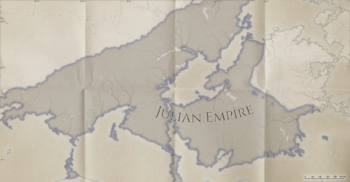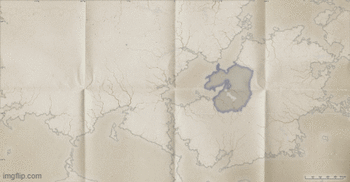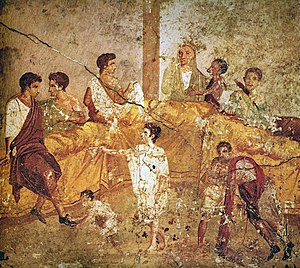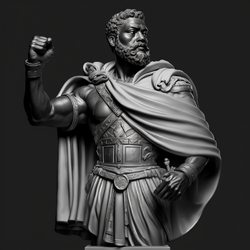Julian Empire
This article is incomplete because it is pending further input from participants, or it is a work-in-progress by one author. Please comment on this article's talk page to share your input, comments and questions. Note: To contribute to this article, you may need to seek help from the author(s) of this page. |
The Serene Julian Empire Imperium Iulianum | |
|---|---|
Motto: Virtus, Auctoritas, Victoria Virtue, Authority, Victory | |
 This map shows the peak of the Julian Empire's territory sometime in the 720s. | |
 The Julian Empire as grew to its peak size from its initial city-state. | |
| Capital | Julia (8 B.C.E. - 456 C.E.) Magnus (456 C.E. - 593 C.E.) Reginum (593 C.E. - 722 C.E.) Julia (722 C.E. - 868 C.E.) |
| Largest city | Julia (at peak) |
| Official languages | Julian |
| Religion |
|
| Demonym(s) | Julian |
| Government | Absolute Monarchy |
| Imperator | |
• 2 B.C. – 14 C.E. | Tiberius Aurelius Julius (Primus Rex) |
• 14 C.E.– 37 C.E. | Octavius Magnus Julius |
• 37 C.E. – 54 C.E. | Claudius Sextillus Julius |
• 54 C.E. – 68 C.E. | Maximus Aurelius Julius |
• 69 C.E.– 79 C.E. | Flavius Regulus Julius |
• 79 C.E. – 117 C.E. | Decimus Magnus Julius |
• 117 C.E.– 162 C.E. | Gaius Valens Julius |
• 162 C.E. – 209 C.E. | Martinius Flava Julius |
• 209 C.E. – 268 C.E | Justus Illius Julius |
• 268 C.E. – 306 C.E. | Marcus Aulus Julius (Optimus Princeps) |
• 306 - 389 C.E. | Heraclius Julius |
• 389 C.E. - 416 C.E. | Marcus Aulus Julius I |
| Legislature | Imperial Assembly (after 723) |
| Area | |
• Total | 10,652,385 sq mi (27,589,550 km2)At the peak of the empire. |
| Population | |
• 726 estimate | 59 - 76 Million (peak) |
The Julian Empire was a vast and powerful empire that existed on the Adulan continent between the 2nd century B.C.E to 868 C.E. The Empire is often associated with the grandeur and sophistication to be expected of the far reaching civilization, but it had a distinct identity and culture of its own. The Julian Empire is said to have emerged from a small city-state founded by Tiberius Aurelius Julius after defeating his brother Romulus Joanus Custodes in a bloody civil war. Tiberius, leading his soldiers on the field, was able to slay his brother and secure the throne for himself and formed the Kingdom of Julia; thus marking him as Primus Rex (First King) of what would eventually evolve into the Julian Empire. The city that became the capital of the kingdom he would rename after himself (Julia) and transformed what was once a humble settlement teetering on starvation into a sprawling metropolis. Under the leadership of a series of capable emperors and daring generals, the Julian Empire expanded its borders, conquered neighboring states, and became a dominant force in the ancient world. It lasted for over eight centuries, leaving behind a rich legacy of art, architecture, literature, and philosophy.
The Julian Empire was renowned for its military prowess and strategic genius. Its armies were well-trained and well-equipped, capable of conquering city-states, nations, tribes, and the hostile wilderness. The empire was divided into provinces, each governed by a governor appointed by the emperor and subject to the power and authority of said Emperor. To control these governors, the Emperors routinely barred their subordinates from the opportunity to hire personal protection or use militia as bodyguards. Instead, the Governors were forced to use the Custodes Regis which they had to pay with their own tax revenue and answered directly to the King. The provinces were administered by a complex bureaucracy, which ensured the smooth functioning of the state. The capital of the Julian Empire, Julia, served as the center of trade, culture, and politics. The city was renowned for its grand architecture, public works, and cultural institutions.
The Julian Empire was a polyglot state, with a diverse population speaking different languages and practicing different religions. The official language of the empire was Julian, but Greek and other languages were also spoken. The empire was tolerant of different religions, and its citizens were free to practice their faiths as long as they did not pose a threat to the state. The Julian Empire was a melting pot of different cultures and traditions, and this diversity enriched its art, literature, and philosophy. Well known for its grand architecture, which combined the best of neighboring cultures and religious styles, the Empire developed a rich cross-section of their surroundings into their every-day lives. Its buildings were massive and imposing, yet elegant and refined. The most famous building in the empire was the Temple of Skora, the head deity in the state sponsored polytheistic pantheon worshipped in the empire.
The literature of the Empire (which was quite expansive as literacy in the region was at an all time high according to anthropologists), which included epic poems, dramas, and philosophical treatises, were housed in a massive library in the center of the capital known as the Library of Scipii. The most famous epic poem of the empire was the Ars Poetica, written by the poet Vrangian. The poem tells the story of Protellus, a prince who journeys to the northern reaches of Adula and becomes the founder of "less civilized" nations beyond Julia, however his love for his homeland draws him back to the Empire where he devotes himself to its betterment. The poem ends with the phrase "Poetry of the people, not the world". The Ars Poetica was considered the national epic of the Julian Empire, and it inspired generations of poets and writers; many of whom considered the text to be the baseline for their own works. Moreover, dramas were believed to have been a staple of the empire, which were performed in grand theaters throughout the empire. The most famous playwright of the empire Justus Hadrian Marius, who wrote powerful tragedies that explored the themes of power, revenge, and fate, also acted prolifically in his own plays and the plays of his fellow playwrights. The themes of reflections on the nature of the universe, human existence, and morality were common among plays.




